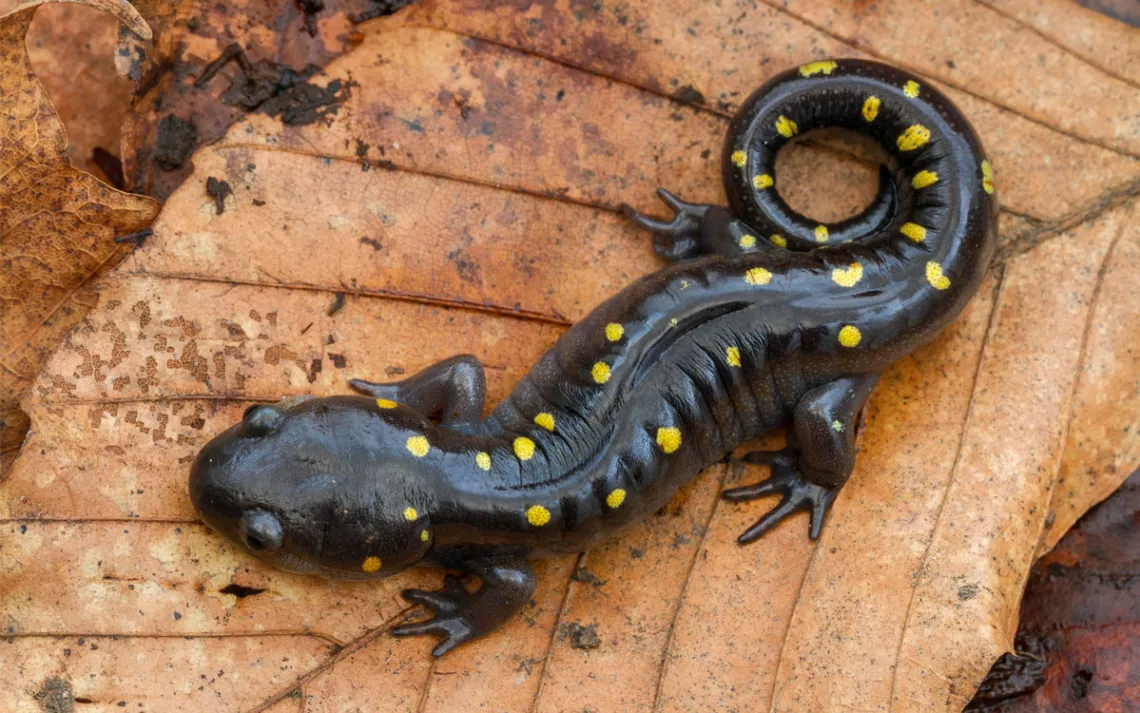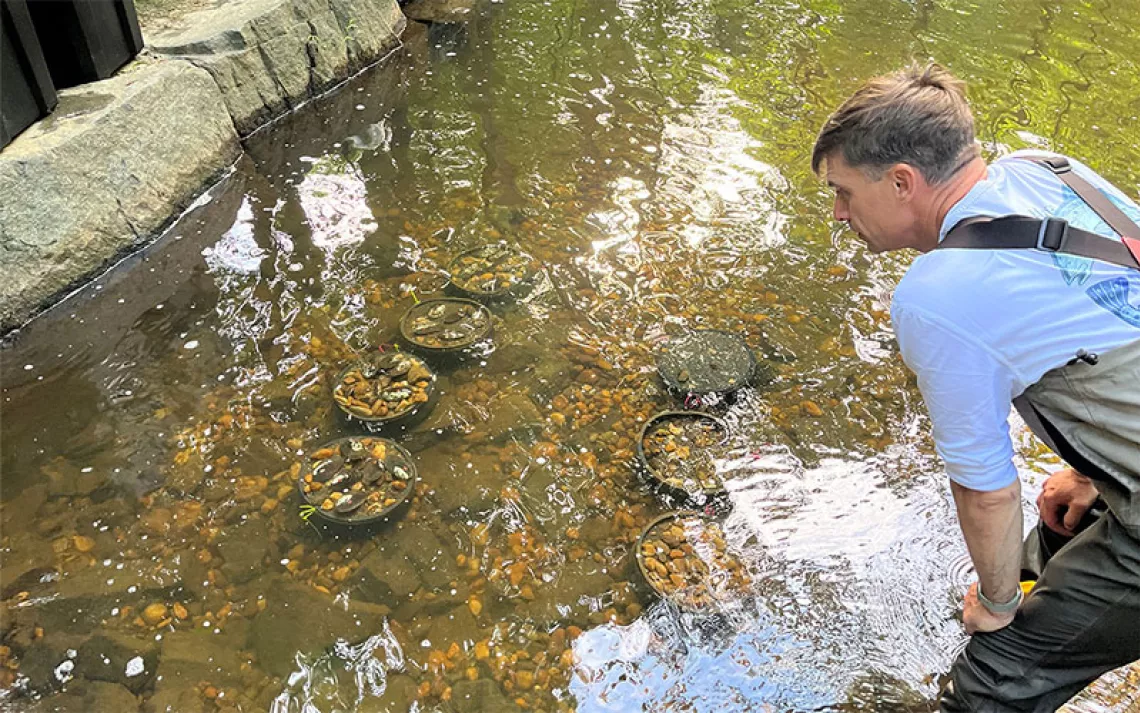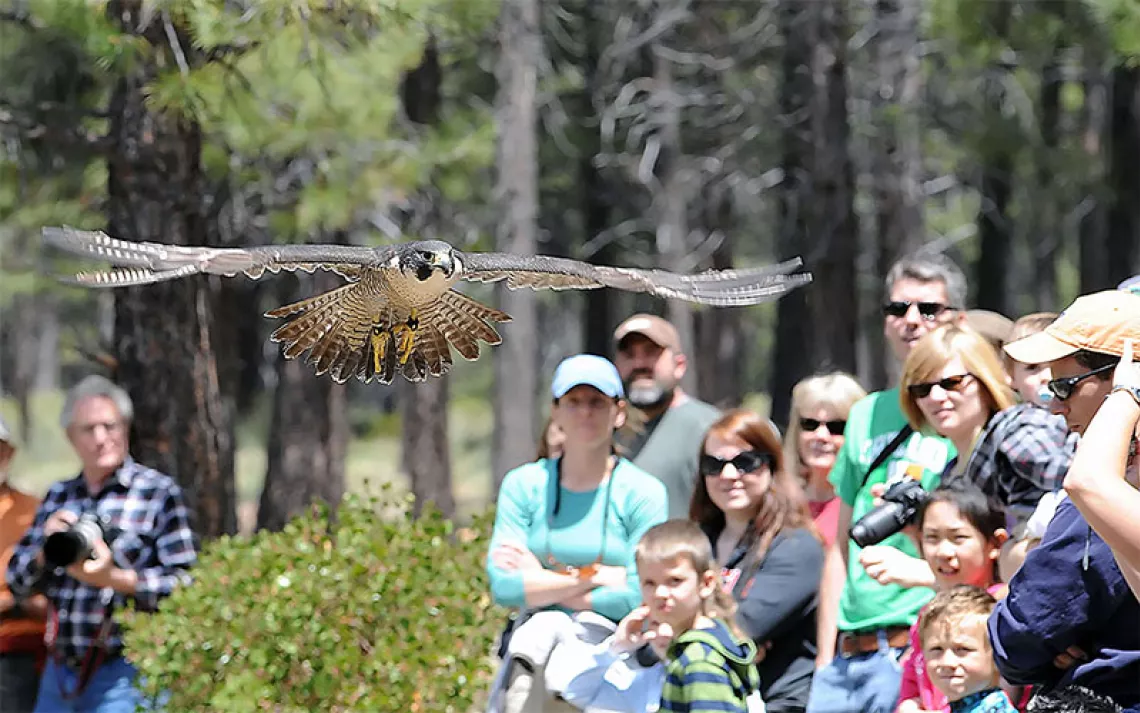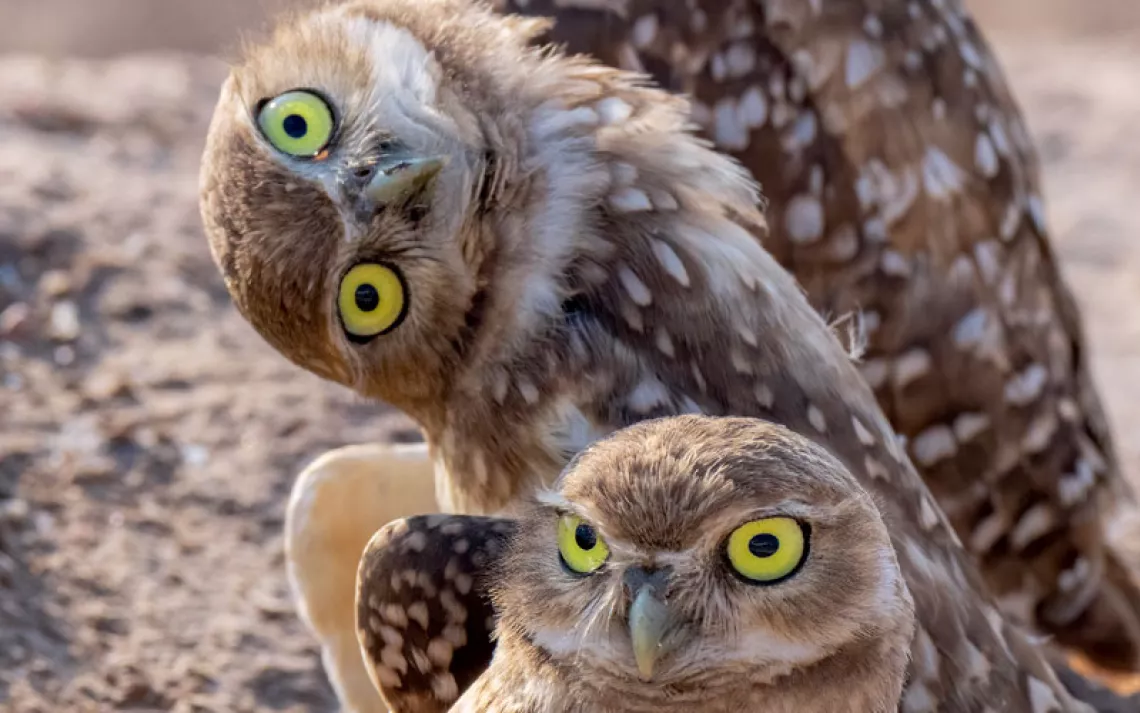This Salamander Is the Only Vertebrate Tapped Into Photosynthesis
All salamanders have amazing biological powers, but this particular one takes the cake

Photo by Gil Wizen/Nature Picture Library
PLODDING ALONG damp forest floors, looking for leaves to hide under, the yellow spotted salamander wears a tiny, knowing smile. Ambystoma maculatum has much to boast about: It’s the only known solar-powered vertebrate.
Salamanders are some of the most biologically remarkable creatures on Earth. They can regenerate limbs after injury, and some can reverse or skip steps in their development (imagine having the choice to skip middle school). Even within this already singular order, the yellow spotted salamander is superlative.
It got this way through symbiosis on steroids. Adult females lay eggs in ephemeral spring pools full of algae. The cells of an algae called Oophila amblystomatis (roughly “salamander egg lover”) make their way into an embryo’s jelly-like egg sac—turning the whole thing fluorescent green—and onward into the salamander’s own cells. This gives the embryo a dual power source.
Like all animals, the yellow spotted salamander has mitochondria that convert oxygen and a sugar byproduct into molecules that can store energy, but with this salamander’s algal-cell allies, it can use energy generated through photosynthesis too. The algal cells in its body feast on the sun’s light, turning solar energy into additional oxygen and, some research suggests, carbohydrates that the salamander’s body can use. In return, nitrogen waste from its egg sac gives a fertilizer-like boost to the algae. As an embryo, this salamander’s body is like a house in the midst of the energy transition—still hooked up to a municipal grid propped up by fossil fuels but with a few solar panels on the roof. Scientists have observed that yellow spotted salamander embryos hosting algal cells are more likely to hatch, to do so earlier, and to come out bigger than those developing without them.
This dual-power symbiosis doesn’t happen in any other vertebrate likely because animals’ immune systems are designed to block foreign cells. But salamanders go their own way, having notably less reactive immune systems than other creatures. Scientists hypothesize that a salamander’s looser cellular definition of self versus other is part of what enables it to regenerate limbs.
The solar power shuts off when these salamanders hatch from their eggs and leave behind the light-filled pools of their infancy for dark forest lairs, where they can live for up to 30 years. Algal DNA remains present in their bodies forever though. A memento from their bizarre early days.
As adults, yellow spotted salamanders hide in the forest floor, garnering them the nickname “mole salamanders.”
Catch sight of their distinctive green eggs in early-spring pools. Reclusive adults are hard to spot.
Along with most of the planet’s salamander species, Ambystoma maculatum lives throughout the eastern United States and southeastern Canada.
 The Magazine of The Sierra Club
The Magazine of The Sierra Club



